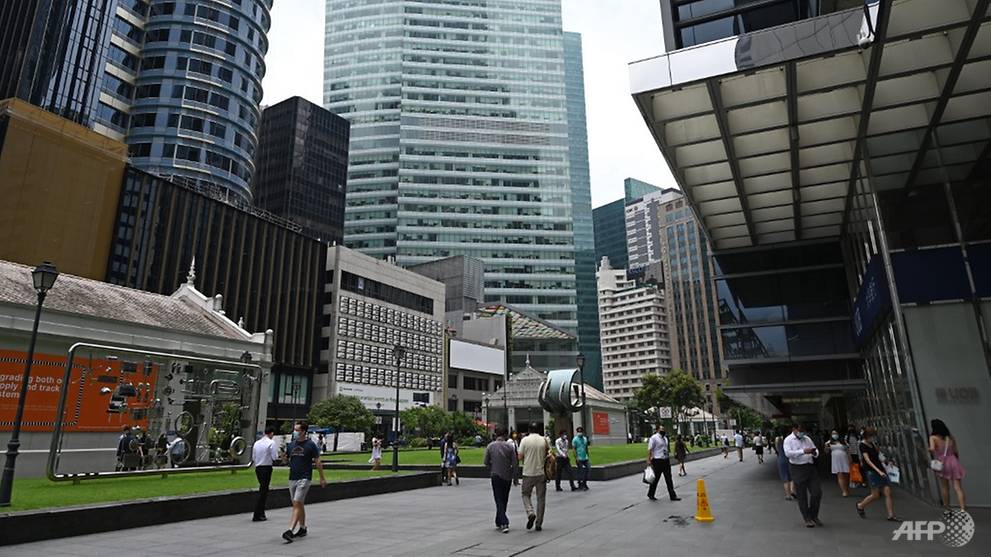(ATF) Although Singapore’s economy shrank to a record low in a pandemic-hit 2020, the good news is the economy has continued to recover in the fourth quarter and the enduring strengths of its economy and widespread vaccination should see the recovery carry on at a decent pace this year, say analysts.
What’s more; should the distribution of Covid vaccines allow for a swifter reopening of international borders, a greater revival in service-sector activity would likely be at hand.
Preliminary data released on Monday revealed Singapore’s economy shrank 5.8% last year, marking its worst economic performance since being granted independence in 1965. But that, nevertheless, was a positive surprise since the expectation was bleaker.
The government had estimated that Singapore’s gross domestic product (GDP) would contract between 6% and 6.5% in 2020.
The October-December 2020 quarter sprang another positive surprise as GDP shrank 3.8% from a year earlier, which was an improvement from the 5.6% drop in the previous three months.
On a quarter-on-quarter seasonally adjusted basis, Singapore’s GDP grew by 2.1% in the final quarter of 2020, following the 9.5% expansion between July and September.
Sector-wise performance
As a small country that relies heavily on external demand, Singapore has been hit hard by the pandemic amid movement restrictions and border closures, with construction, aviation and tourism among the most affected.
Social distancing measures continued to weigh heavily on construction sector activity in particular, which contracted by a still-severe 28.5% yoy in Q4 compared with the 46.2% decline in Q3.
However, improvement in the final quarter of the year was also due to improvements in construction and services sectors.
The decline in service sector activity moderated to 6.8% year-on-year in Q4 from 8.4% in Q3. The Ministry of Trade and Industry’s (MTI) press release suggested that the gains were broadly based, though large segments of the sector remain deep in contraction due to still-weak demand.
Only the aggregated reading, the information & communications, finance & insurance, and professional services – which had proven relatively resilient this year – returned to growth too, albeit at a marginal pace of 0.2% yoy in Q4 after contracting by 0.2% in Q3.
The ministry added that the wholesale trade segment shrank in the fourth quarter due to weak external demand, while the food services sector was “weighed down by constraints arising from the implementation of safe management measures,” as restaurants reduced seats to have more space between dine-in customers.
Manufacturing however, continued to outperform, expanding 9.5% in the fourth quarter, and 7.1% for the entire year.
That growth was mainly due to expansion in the electronics, biomedical and precision engineering clusters, which outweighed declines in the transport engineering and general manufacturing clusters, MTI said.
But on a quarter-to-quarter seasonally adjusted basis, it shrank by 2.6%, after expanding by 12.6% in the third quarter.
Turning the corner in 2021
With a range of health measures and the coronavirus is largely under control, the recovery should continue at a decent pace in the coming quarters, say analysts.
“Covid-related restrictions to consumer activity were further loosened at the end of last year. And plans to have enough vaccines for the entire population by Q3 have raised the prospects of further improvements in domestic activity and have brought forward the likely recovery in the downtrodden tourism and transport services sectors,” said a report by Capital Economic, a London-based economic research consultancy.
Apart from rolling out vaccines, Singapore also hopes to buoy the economy with initiatives such as quarantine-free “travel bubbles” as well as what it calls a “business travel exchange” for in-person international meetings.
The air transport and hotel sectors continued to shrink in the fourth quarter due to the lack of tourism demand.
Further progress in containing the Covid outbreak would likely reduce caution around economic behaviour going forward as well.
“With domestic COVID-19 infections having slowed to a trickle and the government announcing that the economy would enter Phase Three of its reopening, the pickup in economic activity in recent weeks is already visible both on the ground and in high- frequency indicators such as Google mobility data,” said Barclays Research.
In November, the government projected a growth rate of 4% to 6% for 2021. A December survey by the Japan Centre for Economic Research and Nikkei pointed to 4.5% growth in Singapore for the year.
But Capital Economics is more bullish and says; “Overall, we expect the economy to grow by around 8% this year, leaving GDP just over 1% below its pre-crisis trend by the end of the year.”
That gap should close further in 2022 as a recovery in tourism gets into full swing. The consensus is expecting GDP growth of 5.6% in 2021.
READ MORE: Singapore can be China tech’s neutral gateway to ASEAN market
READ MORE: Singapore expects a healthy return to growth in 2021
























